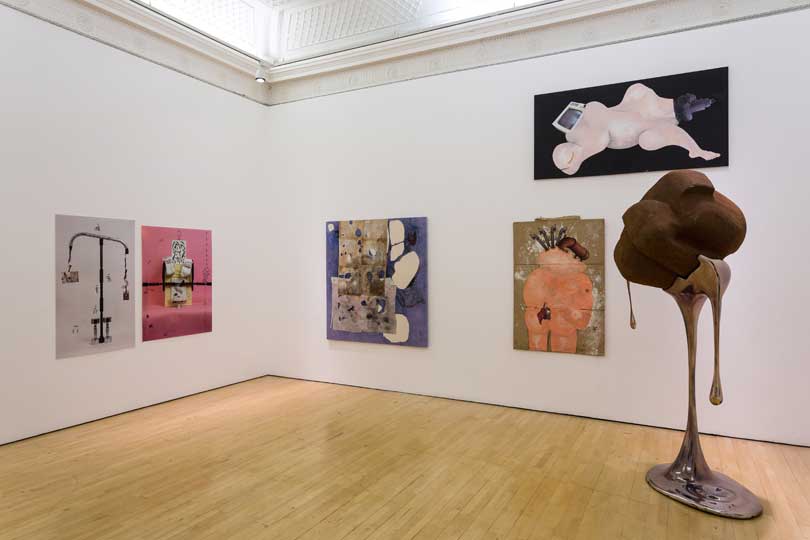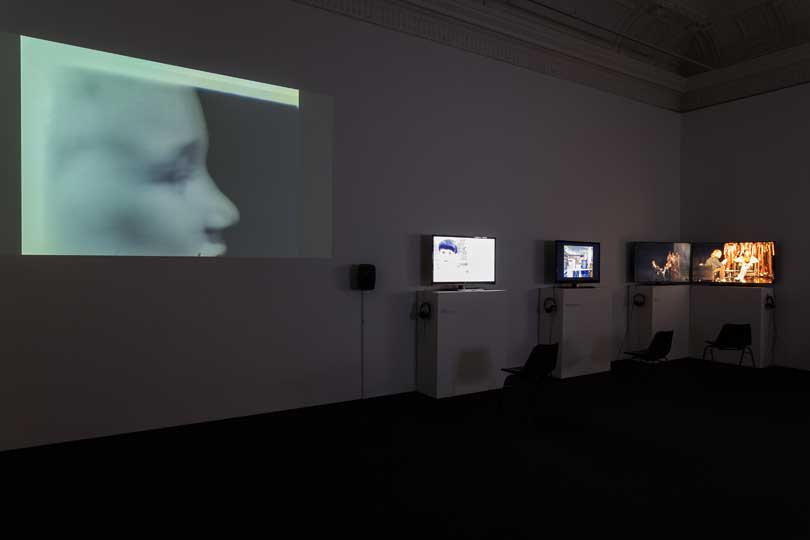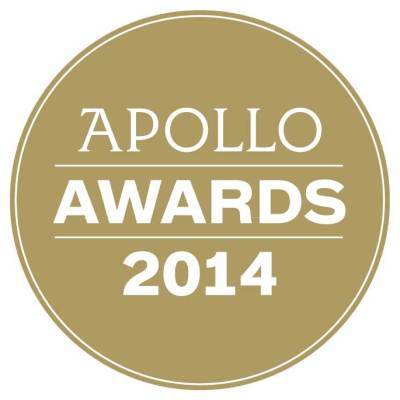Last week brought two shows to London that claim to present the scope of new contemporary art being made in two overlapping locations: the UK and its capital.
The first – ‘Bloomberg New Contemporaries’ at the ICA (until 25 January 2015) – is a large, rambling exhibition spread over two floors of Carlton House Terrace on the Mall. As a survey of up-and-coming artists in the UK, its annual appearance serves, at least in part, to dole out social capital to the young contemporary art set. Everyone seems to know someone who is being shown there, and they don’t tire of telling you about it (a sin of which I too am guilty). As with many shows at the ICA, part of the fun comes from looking at the other visitors for confirmation that you are at the cutting edge of the art scene. In her piece for the November issue of Apollo, Rebecca Heald quoted a critic of the first exhibition (which was called ‘Young Contemporaries’ at the time) in 1949, who surmised from their ‘corduroys, red shirts, long hair and…beards’ that the artists were ‘in no doubt about their vocation’. A quick visual assessment of today’s visitors suggests a new uniform for the contemporary art connoisseur: branded black trainers, black jeans, big coats and unwashed hair.
Installation view of ‘Bloomberg New Contemporaries’ at the Institute of Contemporary Arts, London (26 November 2014–25 January 2015) Photo: Mark Blower

Luckily, the art itself is not nearly as monochromatic as its viewers. There’s an ordered anarchy to the works selected by the judges Marvin Gaye Chetwynd (f.k.a. Spartacus), Enrico David and Goshka Macuga. Collected under one roof, they impress upon the viewer not only the variety, but also the relevance of contemporary art being produced in the UK today. Many are openly political – concerning the body (Yi Dai, Nocturne), society, and the state (Matt Copson, Reynard with a Vengeance). Elsewhere, the sexual (Marie Jacotey-Voyatzis, Be young, be wild, be desperate) and sentimental (Matthew Humphreys, Goodbye) comfortably rub shoulders when you might expect them to jar. While an expressly national platform, ‘New Contemporaries’ also crystallises global processes and concerns, and succinctly shows young UK artists to be pretty clued up about the world around them.
Across the river the South London Galley (SLG) has opened ‘Tomorrow: London’ (until 12 December), collated by curator/entrepreneur Hikari Yokoyama. Unlike ‘New Contemporaries’, and unusually for an exhibition at the SLG, ‘Tomorrow: London’ is expressly concerned with sales, with proceeds from a Paddle8 auction of its pieces going to support the gallery’s Young Arts Project. Perhaps not coincidentally, the show presents a selection of contemporary art that is concerned with the material world. In Feeling It – the booming bass of which dominates the gallery space – Hannah Perry pumps sound waves across a skin of silver ‘car wrap’. Haroon Mirza plays with photons, incorporating LED lights and solar panels into his work. Samara Scott’s Slag, a pockmarked and scarred slab of pastel Styrofoam, stands out as the most nuanced and attractive of these materially experimental artworks, while Celia Hempton’s paintings bring a sliver of intimacy to a show focused on the interaction and sublimation of physical things.
In stark contrast to the ICA, the SLG’s show contains only one video work (Rodrigo Garcia Dutra’s Abstract Eruption III), which would probably be better described as a ‘moving photograph’. In a world increasingly saturated with video art (see the Turner Prize, 2014), this might seem to be an oversight. However, the absence of video at the SLG highlights a problem that is surely going to spread in coming years: how to exhibit video in a contemporary gallery. Back at the ICA, powerful and moving works such as Shen Xin’s Counting Blessings get lost among the gallery’s many screens. The interplay of sound and visuals from multiple pieces can be provocative in its own right, but usually it is overwhelming. Video takes time to settle into, and galleries ought to think more creatively about how to provide a better platform for this flourishing medium. If you do visit the ICA for ‘Bloomberg New Contemporaries’ (and you should), give yourself at least an hour to watch the videos. You won’t be disappointed.
Taken together, ‘Bloomberg New Contemporaries’ and ‘Tomorrow: London’ form a refreshing counterpoint to the Turner Prize. Conveniently, Tate Britain sits between the ICA and the SLG along a sweeping crescent that takes you past Parliament, over the Thames, and into Camberwell. Tie them together, and you have a day out that will pull you past some of the country’s best contemporary art, and deliver you at the SLG’s No67 café in time for a piece of more traditional British art: tea.
Installation view of ‘Bloomberg New Contemporaries’ at the Institute of Contemporary Arts, London
(26 November 2014–25 January 2015) Photo: Mark Blower

‘Bloomberg New Contemporaries’ is at the ICA, London, until 25 January 2015.
‘Tomorrow: London’ is at the South London Gallery until 12 December.
Related Articles
Diary: November Apollo (Rebecca Heald)
New Contenders: New Contemporaries 2013 (Tom Jeffreys)




